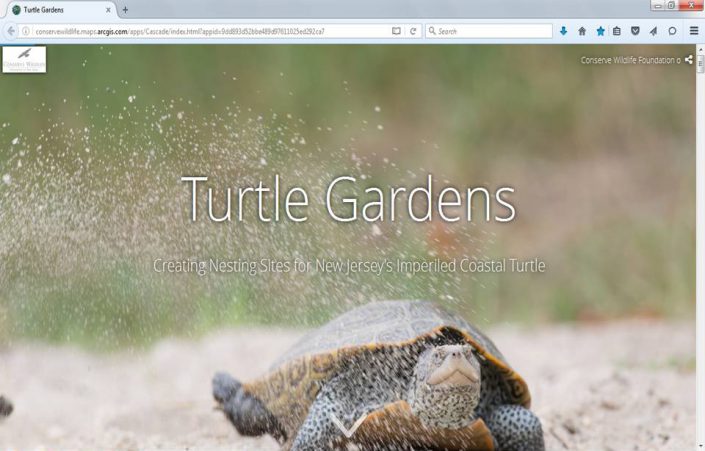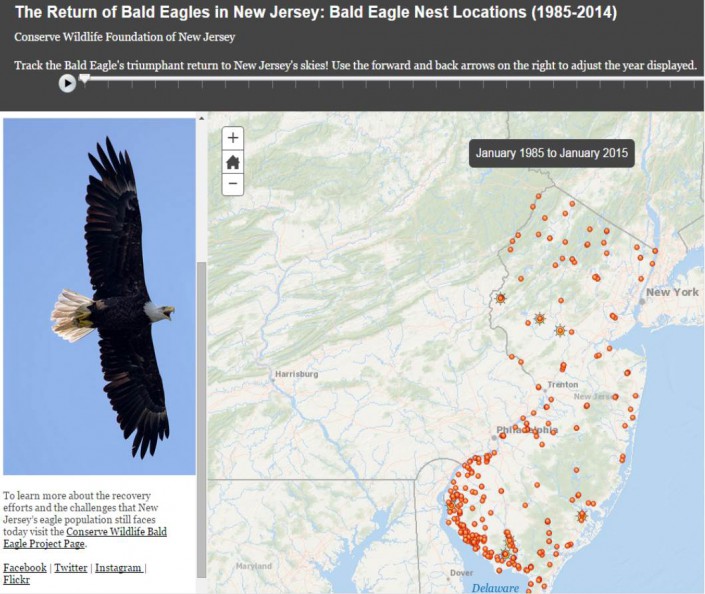New Story Map Shows How Turtle Gardens Actually “Grow” Baby Terrapins
Conserve Wildlife Foundation of New Jersey Releases a New Story Map: “Turtle Gardens”
By: Michael Davenport, Wildlife Biologist & GIS Program Manager
The northern diamondback terrapin is an imperiled species of turtle found in brackish coastal waters along the northeast coast of the United States. Within New Jersey, much of the nesting habitat once used by terrapins has been lost to development and rising sea level. What little suitable nesting habitat remains is often inaccessible to terrapins due to bulkheads or other construction and road mortality is a major cause of terrapin mortality as they cross roadways seeking nesting sites.

Turtle gardens provide suitable nesting habitat for diamondback terrapins where little natural suitable habitat remains or is inaccessible. By enhancing the existing habitat at a site within the terrapin’s range to meet their nesting habitat requirements, terrapins can more safely lay their eggs within an area specifically set-aside for them.
CWF recently partnered with the Marine Academy of Technology and Environmental Science (MATES) on a pilot project turtle garden on Long Beach Island in New Jersey. The newly released Turtle Gardens story map details this project.
LEARN MORE
- Turtle Gardens story map
- Conserve Wildlife Foundation Field Guide: Northern Diamondback Terrapin
- Conserve Wildlife Foundation Great Bay Terrapin Project
- Project Terrapin
- Turtle Garden Fact Sheet



